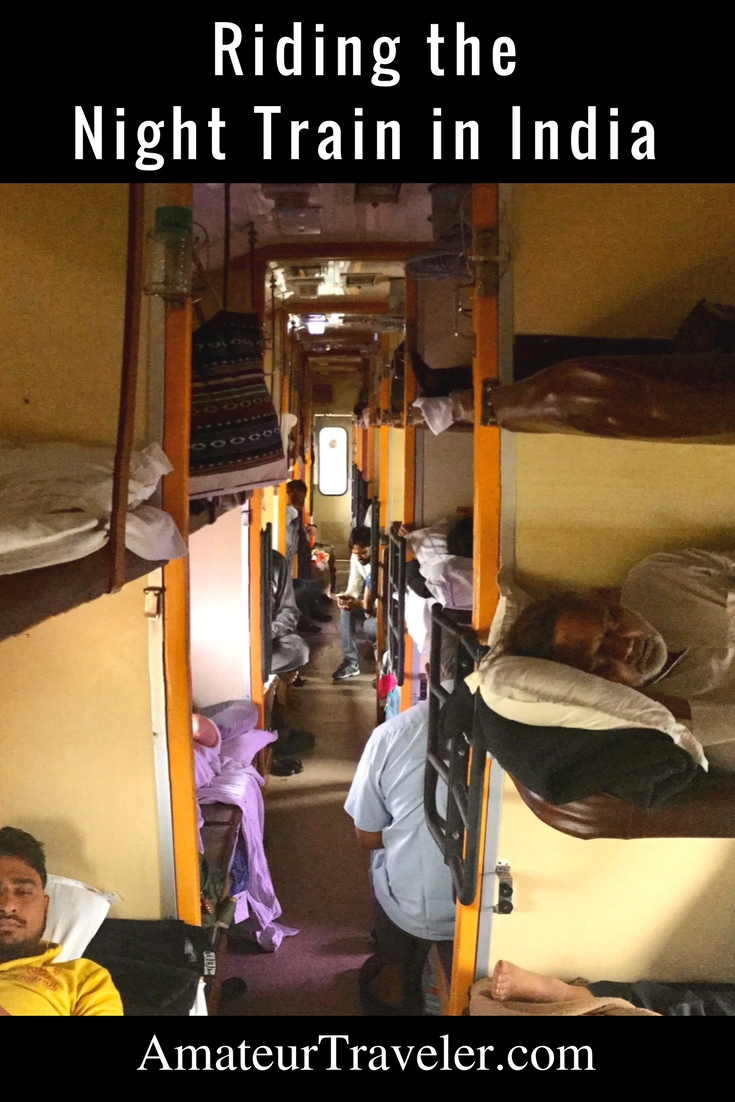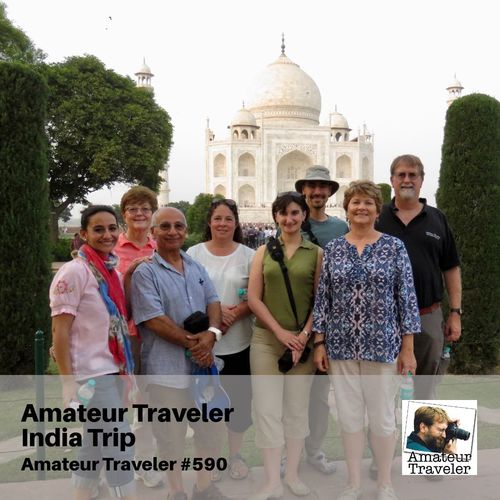Riding the Night Train in India
categories: asia travel
The train rumbled and bounced along the tracks as we all tried to sleep. Sometimes the train would lull you to sleep with its steel on steel lullaby. Sometimes it would shake you awake, with its jerking from side to side, like a friend desperate to tell you the house was on fire. I awoke in the morning expecting to be pulling into the station at Agra, with thoughts of our upcoming visit to the Taj Mahal. I found instead we had almost half our journey ahead of us still. Somewhere in the night, something had gone amiss and we were delayed by hours. Such is life in the Indian rail system.
Our guide Pancham shared a secret of the Indian Rail system. They publish the percentage of trains that arrive on time. Once your train is delayed they continue to delay it more rather than delay another train. It makes their numbers better. Somewhere in the night, we had drawn the short straw.
We settled back into our bunks, 3 bunks high in most of the train, with 2 high on the narrow side of the aisle, 8 bunks in an alcove, 8 alcoves, with no doors in between them. 64 people in our car with nothing to do but wait and hope the chai vendor would bring us his small cups of spiced tea that are one of the many moments of joy in India.
Unlike our first night train from Delhi to Varanasi this one had no dining car that would regularly send out its goods like hot samosas to the train’s passengers. But on the slow train, there is plenty of time to buy food from vendors who would meet the train at the many small stations where it stopped. Because this is India, there is also a smartphone app (Comesum) you can use to order food from a station ahead of you.
We folded up the middle bunk and turned the lower bunk back into a bench for sitting and conversing, although we seemed to have lost our conversation somewhere along the way. We stared out the windows through the haze that covers India in November at the small fields, brickworks, temples, and villages along the route from Varanasi to Agra. The landscape was an array of browns and greens occasionally dotted with the vibrant saris of Indian women or the muted monochromes of the Indian men.
There was time to consider ourselves fortunate that while we were in second class, we were in the second class sleeper with air conditioning. On this extremely long train, there is a car for every pocketbook. There is a second class sleeper without air conditioning, a second class without air conditioning and without sleeping bunks. At the far end of the train are the cars where there are no reserved seats. We watched as the passengers for this car jumped on the train before it stopped as it pulled into the station, anxious to find a place to sit. They passed small children from one set of hands to another while running alongside of the train.
- Get a universal plug adapter
- Get a Car Rental
- Get an eSim to be able to use your smartphone abroad.
- Buy Travel Insurance
- Book Your Accommodation HERE
- Search for Great Tours HERE

Presumably, somewhere ahead there was a 1st class car, with a life you can only dream of, always moving away and somehow staying just out of one’s reach.
We checked our luggage which was locked below our seats with cables and locks we had brought. Had we forgotten ours we could have bought them at the station. I did not sleep well on the first night on the train as I worried about the possibility of theft. My daughter had a friend whose shoes were stolen off her feet while she slept on a night train. My shoes sat in the mesh pocket on the wall in my bunk. We slept in a group, took our precautions and had no problems. But, that was the first trip. Now we were veterans and sleep was easy… when the train would stop shaking me awake.
Even with the delay, the Indian train system is amazingly efficient. Our train easily had over 1,000 passengers, probably over 2,000. You line up for these long trains at the sign on the platform that indicates the number of the car. The signs at the station indicate which train is on which track in English and the local language.
There are restrooms on both ends of the train. They were cleaner than the night trains we had taken in China, with a western toilet at one end of the car (bring your own tissues). Our first train had been relatively new, but this one looked battered by time and use. I could see through to the tracks on from cracks in the floor of the restroom. It looked like a car that had seen thousands and thousands of passengers moving from place to place.
The train lumbered on. Some put back on their eyeshade or put back in their earplugs, crawled under the sheets and coarse blankets the train provided or into the sleep sack they thought to bring and went back to sleep. Some pulled out their snacks they had bought for the journey. Some drank from their water bottles. Some read. Some conversed. Some plugged in their smartphones and listened to their podcasts. Almost all bought and drank chai when it was offered.
There are more than 90,000 miles of train tracks in India. It is a people on the move. Moving efficiently, moving confidently but sometimes, some days, moving just a bit slower than you might like.
I was traveling with a group of Amateur Traveler listeners with Intrepid Travel and we were taking their “Indian Getaway” tour.
+Chris Christensen | @chris2x | facebook
Leave a Reply
Tags: article, india, intrepid travel, train travel







 Beijing to Xian Train – Overnight Train in China with 60 Strangers
Beijing to Xian Train – Overnight Train in China with 60 Strangers Night Train in China (Video #70)
Night Train in China (Video #70) Travel to India – Episode 590
Travel to India – Episode 590 Intrepid Travel India – Review: “Indian Getaway” tour
Intrepid Travel India – Review: “Indian Getaway” tour
